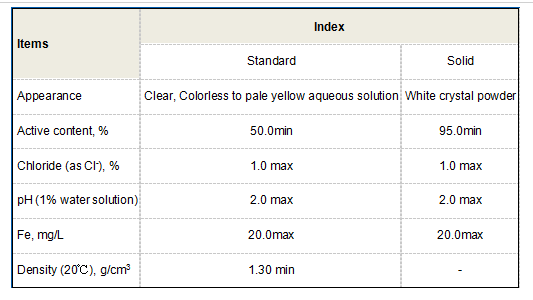Exploring the Benefits and Applications of Octyl Isothiazolinone in Industrial and Consumer Products
Octyl Isothiazolinone Overview, Uses, and Safety Considerations
Octyl isothiazolinone (OIT) is a synthetic organic compound that belongs to the isothiazolinone class of chemicals. Recognized for its effective antimicrobial properties, OIT is widely used as a preservative in various industrial and consumer applications. Its efficacy against bacteria, fungi, and yeast makes it a valuable component in the formulation of products ranging from paints and coatings to personal care items.
Chemical Structure and Properties
Octyl isothiazolinone has a distinct chemical structure characterized by a thiazole ring and an alkyl group. This configuration contributes to its antimicrobial capabilities, allowing it to disrupt cellular membranes of various microorganisms. As a water-soluble compound, OIT can be easily incorporated into aqueous-based formulations, enhancing its applicability in numerous products.
Applications of Octyl Isothiazolinone
The primary application of OIT is as a biocide and preservative in the cosmetic and personal care industry. It is commonly found in shampoos, creams, and lotions, preventing microbial growth and prolonging shelf life. OIT serves as an effective means of ensuring the safety and quality of these products, ultimately benefiting consumers by reducing the risk of infections or irritations caused by contaminated formulations.
In addition to cosmetics, octyl isothiazolinone is utilized in the paint and coatings industry. It helps to protect painted surfaces from mold and mildew, which can significantly degrade the appearance and durability of coatings. As a result, OIT is often included in various marine and industrial coatings, where resistance to harsh environmental conditions is paramount.
octyl isothiazolinone

Furthermore, OIT finds application in industrial processes, including water treatment, where it assists in controlling microbial growth in cooling towers and other water systems. Its versatility and effectiveness in diverse applications underscore its importance in modern manufacturing and formulation practices.
Safety and Regulatory Considerations
Despite its widespread use, safety concerns have been raised regarding the potential sensitization and allergic reactions associated with octyl isothiazolinone. Reports indicate that OIT exposure can lead to skin irritations and allergic contact dermatitis in susceptible individuals. Consequently, regulatory agencies in various countries have established guidelines for its use.
For instance, the European Union classifies OIT as a substance that may cause an allergic skin reaction, leading to its restricted usage in certain cosmetic formulations. The Cosmetic Ingredient Review (CIR) has evaluated the safety of isothiazolinones, concluding that while they are effective preservatives, attention must be paid to their concentrations in consumer products to prevent adverse reactions.
Manufacturers are advised to follow strict regulations regarding the permissible limits of OIT in their formulations, ensuring consumer safety while still leveraging its antimicrobial properties.
Conclusion
Octyl isothiazolinone is a powerful preservative found in numerous consumer and industrial products, primarily due to its effective antimicrobial properties. While it serves critical functions in enhancing product safety and longevity, awareness of its potential health implications is essential for both manufacturers and consumers. As the industry evolves and safety regulations become more stringent, ongoing research and innovation will be crucial in balancing efficacy with safety in the use of OIT and similar compounds in various applications.
-
Water Treatment with Flocculant Water TreatmentNewsJun.12,2025
-
Polymaleic AnhydrideNewsJun.12,2025
-
Polyaspartic AcidNewsJun.12,2025
-
Enhance Industrial Processes with IsothiazolinonesNewsJun.12,2025
-
Enhance Industrial Processes with PBTCA SolutionsNewsJun.12,2025
-
Dodecyldimethylbenzylammonium Chloride SolutionsNewsJun.12,2025





